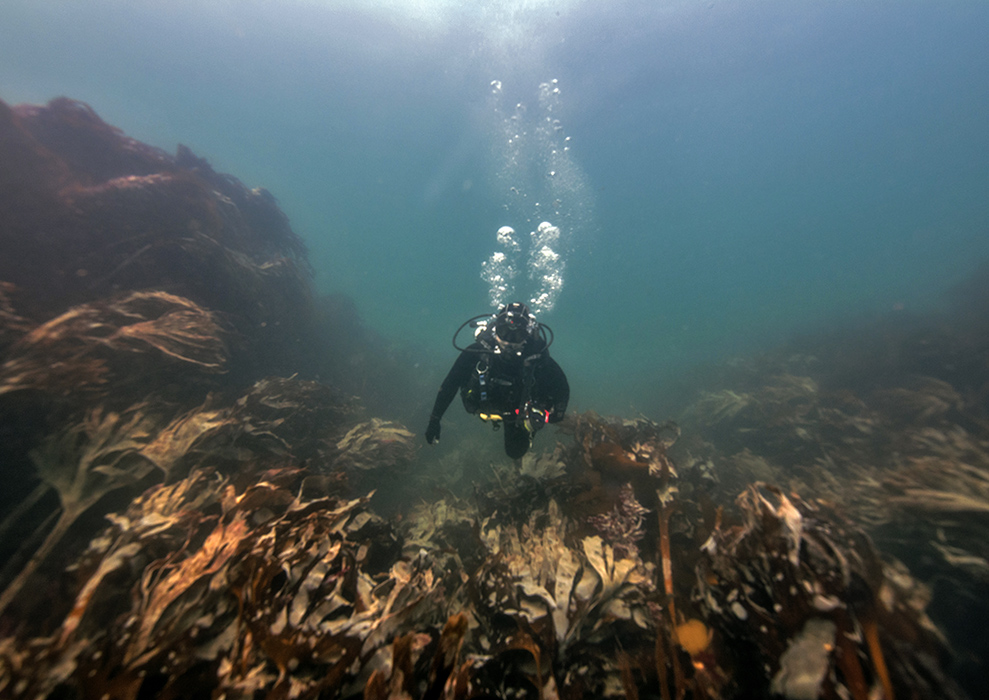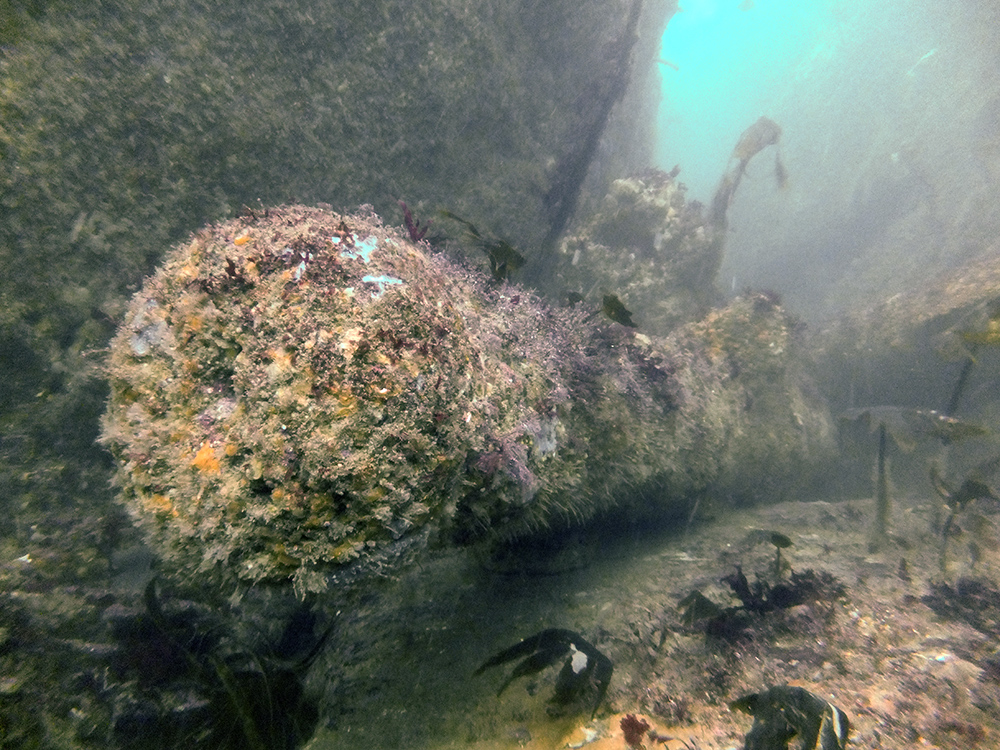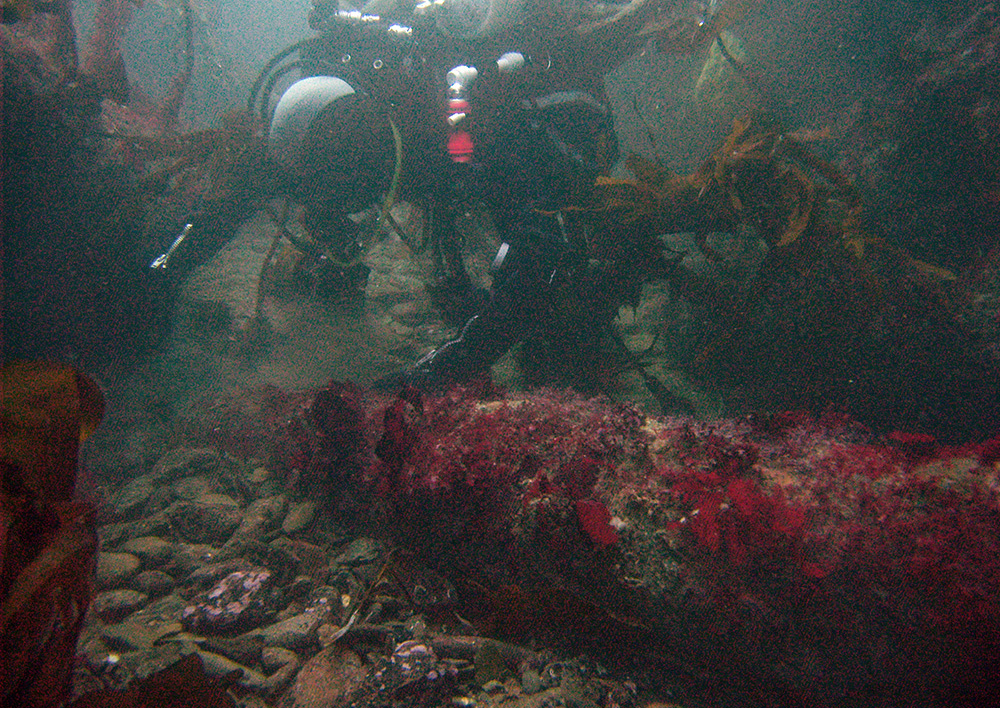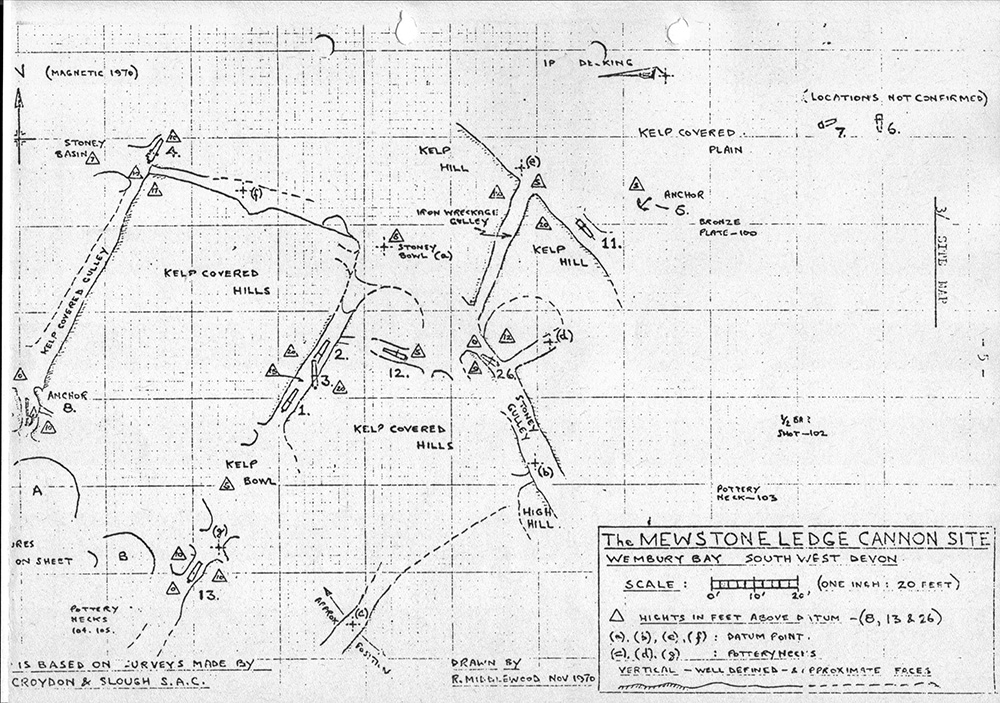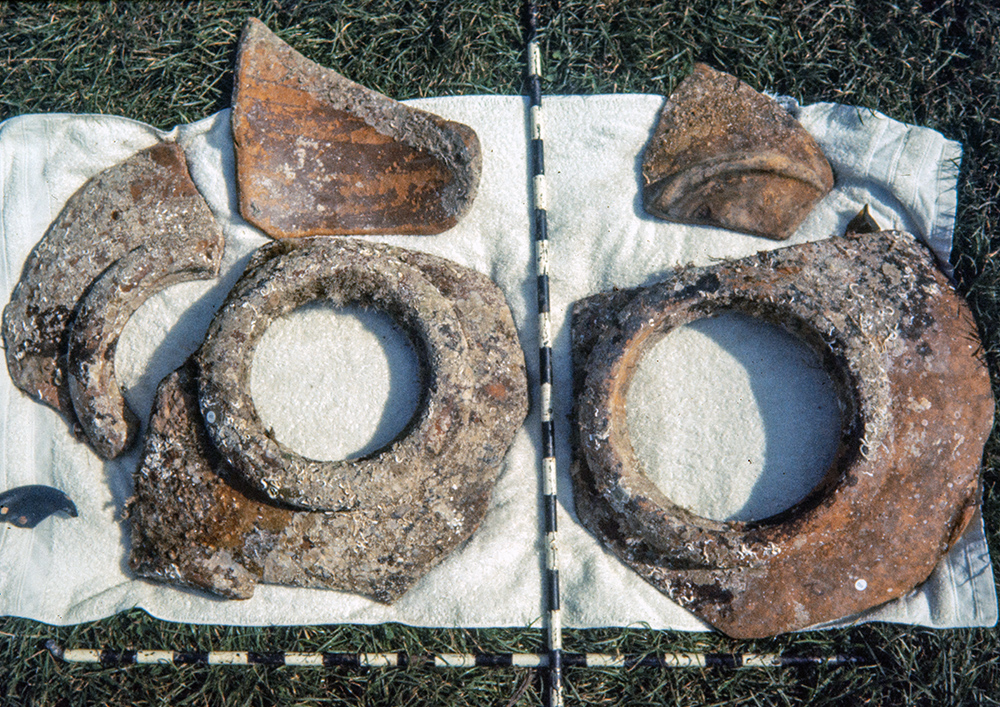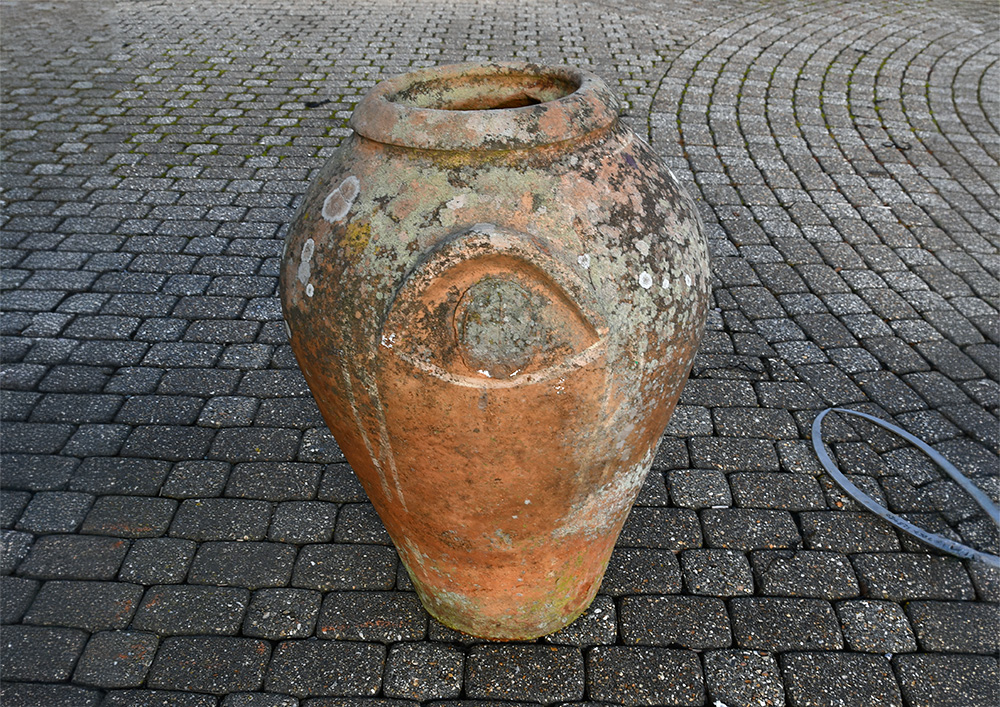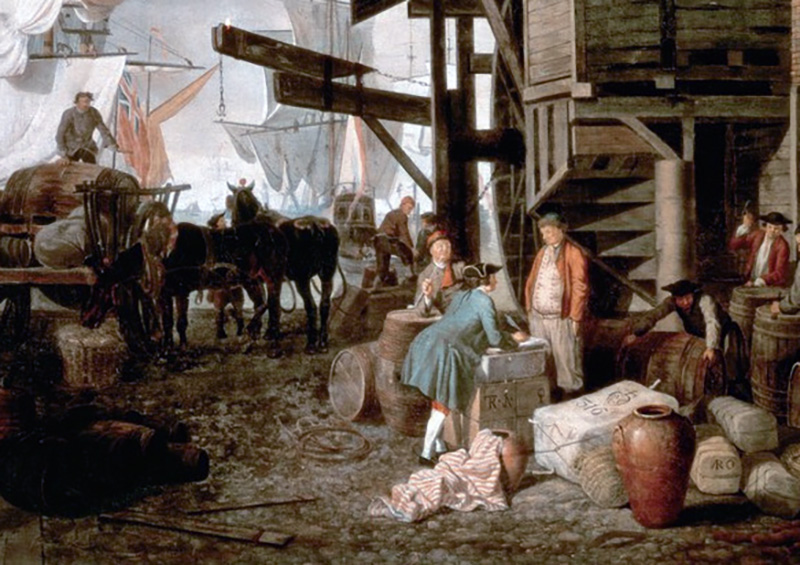Not Set
Mewstone Cannon Site
Cannons were found in the shallow water around the Mewstone Ledge by sports divers in the 1970s.
Type
Armed merchantman
Location
Mewstone Ledge, southwest of the Great Mewstone
History
The Great and Little Mewstone are small rocky islands with steep shelving faces that lie near the eastern entrance to Plymouth Sound, to the south west of Wembury Beach. From the little Mewstone a rocky outcrop continues some 400m towards the south west, an outcrop which is barely covered by the sea and is known as the Mewstone Ledge. The Ledge area has claimed its fair share of ships, including the Ajax and the Rothesay mentioned in this book.
The shallow waters around the Mewstone has always been a favourite place for divers to explore as the visibility is often good and the reef attracts a lot of fish. In 1968 Dick Middlewood from Croydon Branch BSAC discovered two 1.8m (6 ft) long cannons lying in a gully on the Mewstone Ledge with another gun lying nearby. These guns are hard to see under the kelp and being heavily concreted they look like rocks; Middlewood originally thought that they were logs.
At the time he did not know what to do with the site he had found, but in 1969 Dick Middlewood and Dennis Hinchcliffe from the same diving club attended one of the School for Nautical Archaeology Plymouth (SNAP) courses run at the Citadel in Plymouth by Alan Bax. Dick and Dennis were inspired by the course so they decided to set up a project to investigate the site. Also on the course were Martin Dean and Dick Johnstone from Slough Sub-Aqua club who were also keen to get involved, and so began a collaboration between the Croydon and Slough BSAC clubs to explore and map the Mewstone site.
The site is a challenging place to work as it consists of deep, steep sided gullies topped with thick kelp, one gully looks very much like another so it is not easy to find your way around. The site is also very large, covering an area at least 75m by 50m, which made creating a site plan a laborious task.
John Smart, a professional land surveyor who dived with Gwynedd Branch BSAC also joined the team and together with Dean they surveyed the site for two weeks in August 1969. While mapping the site they located more cannon and anchors of different sizes along with a large amount of broken coarse pink pottery. The pottery was identified as being fragments of large bi-conical jars that would have stood 0.8m high, containing 25 gallons of oil and each originally covered in a woven wicker ‘jacket’ for protection and as a means of picking them up. There are so many jar fragments on the seabed it is likely that the wrecked ship was carrying the oil as cargo as there would have been too many jars for the amount needed for use on board a single ship. The jars have small lugs on their sides, originally thought to have been handles, but now thought to be protection for the manufacturers marks often found under each lug. This type of jar were originally described as Iberian or Spanish but later research has showed that they came from Tuscany in Italy and were used to import good quality olive oil to England. The Royal Navy was the largest single customer for table olive oil so it is possible that this shipment was destined for use on Royal Navy ships victualling in Plymouth. The shape of the jars and the style of plaques suggests a date between 1720 and 1800, while one stamp on a jar found on the site suggests a date prior to 1770.
The ten heavily eroded and concreted cannons found by the team were all positioned on the site plan and each gun was recorded in detail. All the guns were found upside down, this is often the case when a gun attached to a gun carriage ends up on the seabed and the wooden carriage erodes away over time. Six of the guns appeared to be 6 pounders (Nos 1,2,3,4,11,12) and four that were probably 3 pounders (6,7,13,26) from between 1743 and 1780.
In the muzzle of Gun26 one of the divers found the remains of the tompion and the tarred string pull used to remove it from the gun. The divers removed the plug and saw that the 3 inch bore of the gun was still quite smooth and a ball was still loaded in the gun. Also on the site the divers found half of a bar shot and areas of concreted cannonballs.
Two anchors were found, Anchor 8 is 3m (10 ft) long weighing approximately 460kg (9 cwt) and Anchor 5 measures just over 1.8m (6 ft) and 200kg (4 cwt). Both anchors are a typical Admiralty longshanks design with pointed crowns and straight arms, originally fitted with a wooden stock.
The only other find from the site was a bronze plate dated to around 1700, it was not recorded and its current location is unknown. In a similar area, divers from Chester Sub-Aqua Club found a bronze bell with the name ‘Nillus’ on it, possibly dated to the 17th or 18th century. The bell was also kept at Fort Bovisand for some time before being stolen.
The work done by the original team was done without the aid of modern methods and technology but they still produced a good site plan along with a very detailed and high quality archaeological report. The team’s efforts and methods were commendable and in 1970 the Croydon Branch was awarded the Duke of Edinburgh’s prize for their survey of the Mewstone Ledge wreck site.
The guns and anchors located in 1969 can still be found on the site today. The oil jar fragments recovered from the site were placed in the display area below the stairs leading to the bar at Fort Bovisand. The dive centre at Fort Bovisand is now closed at the jar fragments are now missing.
Similar oil jars have also been found in Plymouth Sound at Ramscliff and off Penlee Point on the western side of the Sound.
This is a digest version of this account, for more information please contact The SHIPS Project.
Last updated 26 June 2025
Information
Type:
Armed merchant ship
Date Built:
Unknown
Date of Loss:
c1750
Manner of Loss:
Wrecked
Outcome
Unknown
Builder:
Unknown
Official Number:
None
Length
Unknown
Beam
Unknown
Draught
Unknown
Construction
Timber
Propulsion
Sail
Tonnage
Unknown
Nationality
Unknown
Armament
6 pdr and 3 pdr guns
Crew
Unknown
Master
Unknown
Owner
Unknown
Reference
None
Diving the Mewstone Ledge
The kelp-covered gullies that make up this site create an exciting but sometimes challenging environment to dive in. At low water, the tops of the ‘hills’ can be just a few meters below the surface with the gullies reaching down two or three metres in depth. The kelp largely obscures vision so you must swim under it and into the gullies to see any this wreck. Going further east and southeast the gullies flatten out and are very scenic but to the south the reef drops away quite steeply down to 20m. Since the cannons and anchors are badly corroded and often disguised by weed growing on them they may not be immediately obvious. Also, the remains of the Ajax, Rothesay and possibly a modern vessel lie to the north and overlap the site so its hard to tell which wreck is which. The 1.7m long round crown anchor from the Ajax or Rothesay can also be found near the site.
The site is known as the Mewstone Ledge site, Mewstone Ledges or the Mewstone Cannon site.
Click here to download a printable plan of the Mewstone Ledge site ![]() .
.
Finds
11A20 Jar body sherds ![]()
12A08 Jar neck fragment ![]()
12A12 Jar body sherd with ‘IF’ plaque ![]()
12A18 Jar neck (not Mewstone site) ![]()
Not Set
Leave a message
Your email address will not be published.
Click the images for a larger version
Image use policy
Our images can be used under a CC attribution non-commercial licence (unless stated otherwise).




